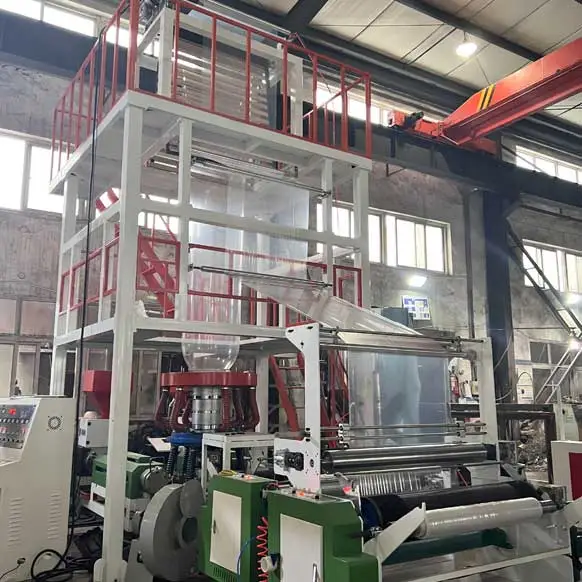
- > Search By Functions
- > Co-Extrusion
- > Search By Material
- > Search By Machines
- > Search By Machines
- > Search By Machines
What are you looking for?
Common problems with films produced by plastic film blowing machine include stickiness, difficulty in opening, lack of clarity, wrinkles, water marks, uneven thickness, films that are too thick or thin, poor heat sealing, weak tensile strength, unstable bubbles, rough surfaces, and unpleasant odors.
Stickiness and difficulty in opening can be caused by inappropriate resin materials, high temperatures of the molten resin, large blow-up ratios, slow cooling rates, and fast traction speeds. These issues can be resolved by changing the resin material, lowering the extrusion temperature and blow-up ratio, enhancing the cooling effect, and slowing down the traction speed.

Poor transparency can result from low extrusion temperatures, small blow-up ratios, ineffective cooling, high moisture content in the resin materials, and fast traction speeds. Solutions include increasing the extrusion temperature and blow-up ratio, enhancing the cooling effect, drying the raw materials, and slowing down the traction speed.
Wrinkles can be caused by uneven film thickness, inadequate cooling, large blow-up ratios, large angles of the herringbone splint, uneven pressure on both sides of the traction roller, and non-parallel axes between the guide rollers. These can be addressed by adjusting the film thickness, enhancing the cooling effect, reducing the blow-up ratio, decreasing the angle of the herringbone splint, adjusting the pressure of the traction roller, and aligning the axes of each guide shaft.
Water streaks can be due to low extrusion temperatures and high moisture content in the resin. These can be resolved by adjusting the extrusion temperature and drying the resin materials.
Uneven film thickness can result from uneven die gaps, uneven temperature distribution at the die opening, inconsistent air supply volume around the cooling air ring, inappropriate blow-up and traction ratios, and inconsistent traction speeds. Solutions include adjusting the die gap, the temperature at the die opening, the cooling device, the blow-up and traction ratios, and maintaining a constant traction speed.
Thick films can be caused by large die gaps and extrusion volumes, large air volumes of the cooling air ring, and slow traction speeds. These can be addressed by adjusting the die gap, reducing the air volume of the air ring, and increasing the traction speed.
Thin films can result from small die gaps, small air volumes of the cooling air ring, and fast pulling speeds. These can be resolved by adjusting the die gap, increasing the air volume of the air ring, and slowing down the traction speed.
Poor heat sealing can be due to low dew points, and inappropriate blow-up and traction ratios. These can be addressed by adjusting the air volume of the air ring, and reducing the blow-up and traction ratios.
Weak longitudinal tensile strength can be caused by high temperatures of the molten resin, slow traction speeds, large blow-up ratios, and fast cooling speeds. These can be resolved by lowering the temperature of the molten resin, increasing the traction speed, adjusting the blow-up ratio, and slowing down the cooling speed.
Weak transverse tensile strength can result from fast traction speeds, and slow cooling speeds of the cooling air ring. These can be addressed by slowing down the traction speed, and increasing the air volume of the air ring.
Unstable bubbles can be due to high or low extrusion temperatures, unstable air volumes of the cooling air ring, and interference from strong external airflows. These can be resolved by adjusting the extrusion temperature, ensuring a uniform air supply volume around the cooling air ring, and reducing the interference of external air flow.
Rough and uneven surfaces can be caused by low extrusion temperatures and fast extrusion speeds. These can be addressed by adjusting the extrusion temperature and slowing down the extrusion speed.
Unpleasant odors can result from the smell of the resin material itself, high extrusion temperatures of the molten resin, and insufficient cooling of the film bubble. These can be resolved by changing the resin material, adjusting the extrusion temperature, and enhancing the cooling efficiency of the cooling air ring.